#Assyrian universalism
Text
Cosmas Megalommatis, Assur: World Mythology - 1989
Κοσμάς Μεγαλομμάτης, Ασσούρ: Παγκόσμια Μυθολογία, Ελληνική Εκπαιδευτική Εγκυκλοπαίδεια, 1989
Кузьма Мегаломматис, Ашшур: мировая мифология, Греческая педагогическая энциклопедия, 1989
Kosmas Megalommatis, Aššur: Weltmythologie, Griechische Pädagogische Enzyklopädie, 1989
Kosmas Gözübüyükoğlu, Aşur: Dünya Mitolojisi, Yunan Pedagoji Ansiklopedisi, 1989
قزمان ميغالوماتيس، آشور : اساطیر جهانی، دایره المعارف آموزشی یونانی، 1989
Côme Megalommatis, Assur: Mythologie mondiale, Encyclopédie pédagogique grecque, 1989
1989 قزمان ميغالوماتيس، آشور: الأساطير العالمية، الموسوعة التربوية اليونانية،
Cosimo Megalommatis, Assur: mitologia mondiale, Enciclopedia pedagogica greca, 1989
Cosimo Megalommatis, Assur: mitología mundial, Enciclopedia pedagógica griega, 1989
Cosmas Megalommatis, Assur: World Mythology, Greek Pedagogical Encyclopedia, 1989
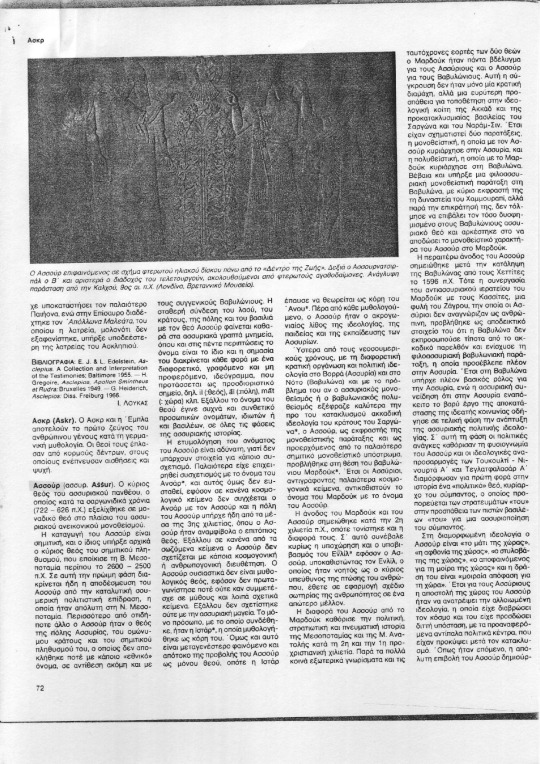

===================
Скачать PDF-файл: / PDF-Datei herunterladen: / Télécharger le fichier PDF : / PDF dosyasını indirin: / :PDF قم بتنزيل ملف / Download PDF file: / : یک فایل دانلود کنید / Κατεβάστε το PDF:
#Assur#Assyria#Assyrian religion#Mesopotamian religions#Assyrian universalism#Ασσούρ#Ασσυρία#Ασσυριακή αυτοκρατορία#ασσυριακός ουνιβερσαλισμός#ουνιβερσαλισμός#μονοθεϊσμός#ασσυριακός μονοθεϊσμός
0 notes
Text
Just leaving this here.
Feel free to reblog.
#dougie rambles#news#political crap#middle east#assyria#bethnahrin#genocide#assyrians#Assyrian people#indigenous peoples#history#forgotten history#sayfo#anfal genocide#Assyrian genocide#arizona state university#genocide awareness#stateless#unrepresented
9 notes
·
View notes
Text
Human Hessonite

Weird input about Hessonite as a human
When first seeing Hessonite, one could wonder that she could be head-cannoned to be more ancient in the human timeline than set in the modern era of Steven Universe if she were ever a human and not some space rock person. In particular her physical resemblance and her vibe felt more at home with Assyrian, Mesopotamian or a Sumerian queens or powerful women of the past, with women of those times being like that of the legendary and mythical Queen Semiramis who was a warrior just like Hess or the actual physical resemblance to Queen Puabi.
- The armor’s design had some elements taken from Roman influences with that scale armor and belly ribbon that patrician Roman generals would’ve worn
Also fun fact a lot of Mesopotamian queens have those thick eyebrows and poofy hair as seen below with Queen Puabi. Much like Hessonite.
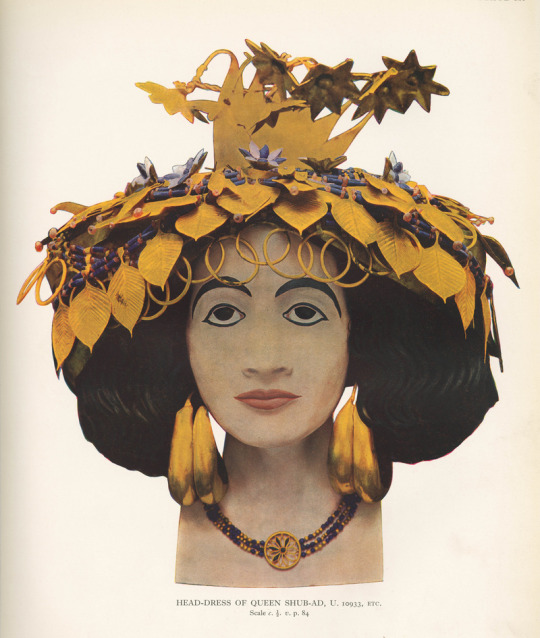
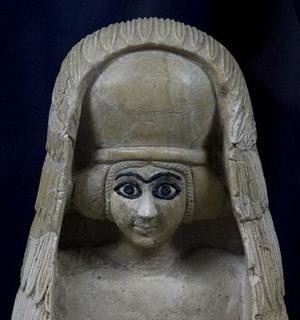
Statue of a priestess Woman -from the temple of Ishtar in the city of Mari, early dynastic period
A lot of Sumerian statues of both priests and priestesses often have the signature unibrow
#stevenuniverse#art#fanart#hessonite#su hessonite#unleash the light#make hessonite a tumblr sexywoman#mesopotamia#Queen Puabi#Assyrian#historical#history#Steven universe human au#Sorry for the history lesson
8 notes
·
View notes
Note
Hi! What do you mean when you say assyrian? Like what is your cultural heritage like? What facets of historical assyria do you currently imbibe/try to emulate? I'm a bit of a history nerd and saw your rice post, so i thought i'd try and get some first person perspectives on this for a pet project of mine. (Anoning coz my main is a hornyblog)
hi, anon! assyrians are not just a historical empire- we are a contemporary ethnic group!

the assyrians are indigenous to the mesopotamian area, and are descended from the original assyrians with whom you are likely more familiar. however, the the assyrian genocide or sayfo that began in 1915 (connected to the armenian genocide + the greek genocide) caused many people to flee to other countries, including my mom's family, so there are more assyrians in the diaspora than in the "homeland" these days.
you may also see us referred to as syriac (with a C, not syrian), which some people prefer because it is a clearer differentiation between ancient assyrians and modern assyrians/syriacs. there are a few other terms like nestorian, aramean, chaldean, but not all of those are in common use these days either and mostly have specific use cases when it comes to language or religion (ex. nestorian mostly refers to members of the assyrian church of the east, but in some older texts it's used to describe assyrians regardless of specific church affiliation). generally people just identify as assyrian.
we did descend from ancient assyrians, and modern assyrian languages (suret) did come from old aramaic, but for me that connection has a pretty negligible connection to modern life, aside from occasionally pointing at assyrian statues in museums and saying "lol look it's us" to my brother. not sure if that's the case for other assyrians, but it isn't something i've seen personally.
if you've got an interest in history, however, you may enjoy our flag!
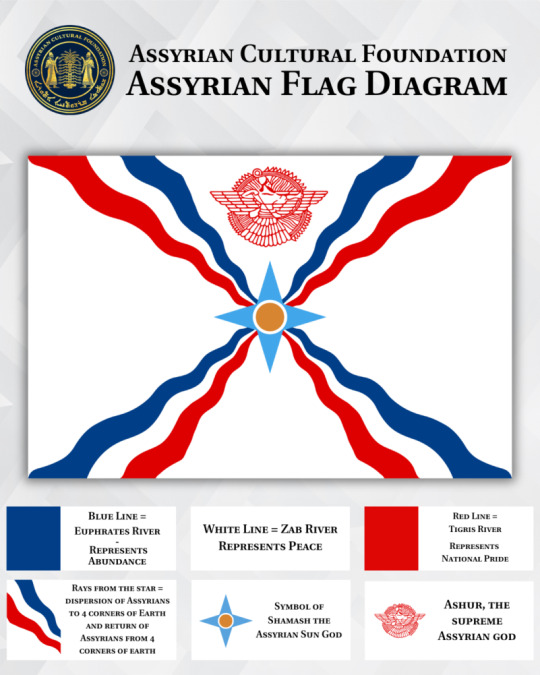
i swear i'm not mad that i spent ten minutes writing out my own description only to find that the ACF already had this nice helpful diagram my only addition is that the gold part of the symbol in the center represents the sun and the four-pointed star represents land, with the light blue representing tranquility. also that i could have SWORN there was something representing martyrs but apparently not lol. the one assyrian cultural artefact that doesn't reference martyrs i guess.
you can also find variants of this flag with the ashur emblem either outlined in gold or colored in with gold and blue, but afaik there's not a significant symbolic difference there
this flag was designed by george bit atanus as part of a competition started by the assyrian universal alliance in 1968, and adopted some time in the early 70s. i should note that the presence of ashur and shamash on this flag are more of a tribute to ancient assyrians as part of our history as opposed to a current religious reference, as assyrians are overwhelmingly christian.
i ended up writing a lot more for this than i thought i would and now i don't know how to end this post lol. uhh take this screenshot from the "assyrian people" wiki page that always makes me laugh a little bit
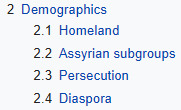
like yes we have been persecuted enough for it to be a whole section on our wiki page ✨ #flex #winning
108 notes
·
View notes
Note
Hello! I have a deep interest in mesopotamian history and linguistics. I am not a professional at all, however. It is just a hobby of mine. I wanted to know if you were aware of any dictionaries for akkadian words (preferably online resources) that are reliable. When I search "akkadian dictionary" this website is the first to appear: https://www.assyrianlanguages.org/akkadian/index_en.php
However, I am not sure how reliable it is because it does not have a clear author/authors or credentials. Would you happen to know anything about it? And if there are other resources, could you please link them?
Thank you!
Hello! That dictionary is handy for quick lookup, but as you say, I don't know where they're getting the information from, so I would be a bit dubious. The sine qua non of Akkadian dictionaries is available for free online: the Assyrian Dictionary of the Oriental Institute of the University of Chicago (CAD). Unfortunately, it's available only as PDFs for each initial letter, and the older letters are poorly OCRed, so searching it can be tedious and manual.
A good in-between option is the Concise Dictionary of Akkadian (CDA), available as a PDF here.
Best of luck with your studies!
80 notes
·
View notes
Note
For a school assignment, I'm assembling an anthology around the theme of queer divinity and desire, but I'm having a hard time finding a fitting essay/article (no access to real academic catalogues :/ ), do you know of any essays around this theme?
below are essays, and then books, on queer theory (in which 'queer' has a different connotation than in regular speech) in the hebrew bible/ancient near east. if there is a particular prophet you want more of, or a particular topic (ištar, or penetration, or appetites), or if you want a pdf of anything, please let me know.
essays: Boer, Roland. “Too Many Dicks at the Writing Desk, or How to Organize a Prophetic Sausage-Fest.” TS 16, no. 1 (2010b): 95–108. Boer, Roland. “Yahweh as Top: A Lost Targum.” In Queer Commentary and the Hebrew Bible, edited by Ken Stone, 75–105. JSOTSup 334. Cleveland, OH: Pilgrim, 2001. Boyarin, Daniel. “Are There Any Jews in ‘The History of Sexuality’?” Journal of the History of Sexuality 5, no. 3 (1995): 333–55. Clines, David J. A. “He-Prophets: Masculinity as a Problem for the Hebrew Prophets and Their Interpreters.” In Sense and Sensitivity: Essays on Reading the Bible in Memory of Robert Carroll, edited by Robert P. Carroll, Alastair G. Hunter, and Philip R. Davies, 311–27. JSOTSup 348. Sheffield: Sheffield Academic Press, 2002. Graybill, Rhiannon. “Yahweh as Maternal Vampire in Second Isaiah: Reading from Violence to Fluid Possibility with Luce Irigaray.” Journal of feminist studies in religion 33, no. 1 (2017): 9–25. Haddox, Susan E. “Engaging Images in the Prophets: Feminist Scholarship on the Book of the Twelve.” In Feminist Interpretation of the Hebrew Bible in Retrospect. 1. Biblical Books, edited by Susanne Scholz, 170–91. RRBS 5. Sheffield: Sheffield Phoenix Press, 2013. Koch, Timothy R. “Cruising as Methodology: Homoeroticism and the Scriptures.” In Queer Commentary and the Hebrew Bible, edited by Ken Stone, 169–80. JSOTSup 334. Cleveland, OH: Pilgrim, 2001. Tigay, Jeffrey. “‘ Heavy of Mouth’ and ‘Heavy of Tongue’: On Moses’ Speech Difficulty.” BASOR, no. 231 (October 1978): 57–67.
books: Ahmed, Sara. Queer Phenomenology: Orientations, Objects, Others. Durham, NC: Duke University Press, 2006. Bauer-Levesque, Angela. Gender in the Book of Jeremiah: A Feminist-Literary Reading. SiBL 5. New York: P. Lang, 1999. Black, Fiona C., and Jennifer L. Koosed, eds. Reading with Feeling : Affect Theory and the Bible. Atlanta, GA: SBL Press, 2019. Brenner, Athalya. The Intercourse of Knowledge: On Gendering Desire and “Sexuality” in the Hebrew Bible. BIS 26. Leiden: Brill, 1997. Camp, Claudia V. Wise, Strange, and Holy: The Strange Woman and the Making of the Bible. JSOTSup 320. Gender, Culture, Theory 9. Sheffield: Sheffield Academic Press, 2000. Chapman, Cynthia R. The Gendered Language of Warfare in the Israelite-Assyrian Encounter. HSM 62. Winona Lake, IN: Eisenbrauns, 2004. Creangă, Ovidiu, ed. Men and Masculinity in the Hebrew Bible and Beyond. BMW 33. Sheffield: Sheffield Phoenix Press, 2010. Eilberg-Schwartz, Howard. God’s Phallus: And Other Problems for Men and Monotheism. Boston: Beacon, 1995. Huber, Lynn R., and Rhiannon Graybill, eds. The Bible, Gender, and Sexuality : Critical Readings. London, UK ; T&T Clark, 2021. Guest, Deryn. When Deborah Met Jael: Lesbian Biblical Hermeneutics. London: SCM, 2005. Graybill, Rhiannon, Meredith Minister, and Beatrice J. W. Lawrence, eds. Rape Culture and Religious Studies : Critical and Pedagogical Engagements. Lanham, Maryland: Lexington Books, 2019. Graybill, Rhiannon. Are We Not Men? : Unstable Masculinity in the Hebrew Prophets. New York, NY: Oxford University Press USA, 2016. Halperin, David J. Seeking Ezekiel: Text and Psychology. University Park: Pennsylvania State University Press, 1993. Jennings, Theodore W. Jacob’s Wound: Homoerotic Narrative in the Literature of Ancient Israel. New York: Continuum, 2005. Macwilliam, Stuart. Queer Theory and the Prophetic Marriage Metaphor in the Hebrew Bible. BibleWorld. Sheffield and Oakville, CT: Equinox, 2011. Maier, Christl. Daughter Zion, Mother Zion: Gender, Space, and the Sacred in Ancient Israel. Minneapolis, MN: Fortress, 2008. Mills, Mary E. Alterity, Pain, and Suffering in Isaiah, Jeremiah, and Ezekiel. LHB/OTS 479. New York: T. & T. Clark, 2007. Stökl, Jonathan, and Corrine L. Carvalho. Prophets Male and Female: Gender and Prophecy in the Hebrew Bible, the Eastern Mediterranean, and the Ancient Near East. AIL 15. Atlanta, GA: SBL, 2013. Stone, Ken. Practicing Safer Texts: Food, Sex and Bible in Queer Perspective. Queering Theology Series. London: T & T Clark International, 2004. Weems, Renita J. Battered Love: Marriage, Sex, and Violence in the Hebrew Prophets. OBT. Minneapolis, MN: Fortress, 1995.
92 notes
·
View notes
Text

‘Extremely Rare’ Ancient Stone Seal Discovered in Jerusalem
An "extremely rare and unusual" ancient stone artifact-thought to be around 2,700 years old-has been discovered in Jerusalem.
The artifact in question, a seal made of black stone, was uncovered during an excavation conducted by the Israel Antiquities Authority and the City of David organization near the Southern Wall of the Temple Mount (also known as Al-Aqsa)-a site in Jerusalem's Old City that is considered holy by Jewish people, Muslims and Christians.
The stone seal bears a name inscribed in the paleo-Hebrew script, as well as an image of a winged figure. It is thought to have been used both as an amulet and as a stamp to seal documents, Filip Vukosavović, a senior field archaeologist with the Israel Antiquities Authority (IAA), told Newsweek.
"The seal is one of the most beautiful ever discovered in excavations in ancient Jerusalem, and is executed at the highest artistic level," Yuval Baruch and Navot Rom, excavation directors on behalf of the IAA, said in a press release.
The seal has a hole drilled through it lengthwise so that it could be strung onto a chain and hung around the neck. In the center, a figure with wings is depicted in profile, wearing a long, striped shirt and striding toward the right. The figure has a mane of long curls covering the nape of the neck, and on its head sits a hat or a crown.
The figure is raising one arm upward with an open palm, perhaps indicating that it is holding some kind of object.
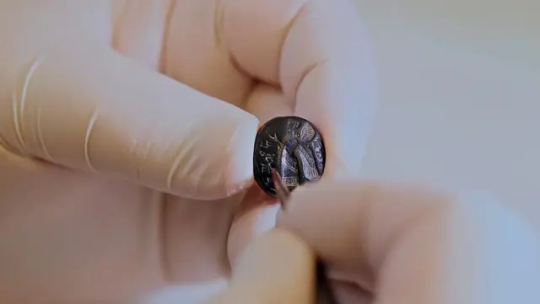




Depictions of winged figures such as these are known in neo-Assyrian art of the 9th-7th centuries B.C. and were considered a kind of protective magical figure, according to Vukosavović. The artifact, thus, demonstrates the influence of the Assyrian Empire-a major civilization of the ancient Near East that had conquered the Israelite Kingdom of Judah, including its capital Jerusalem.
"This is an extremely rare and unusual discovery. This is the first time that a winged 'genie'– a protective magical figure-has been found in Israeli and regional archaeology," Vukosavović said in an IAA press release.
On both sides of the figure, an inscription is engraved in paleo-Hebrew script. In English script, this inscription translates as: "Le Yehoʼezer ben Hoshʼayahu."
"[Yehoʼezer] was a common name," Ronny Reich, a researcher from the University of Haifa said.
The researchers believe that the stone object was originally worn as an amulet around the neck of a man called Hoshʼayahu, who held a senior position in the administration of the Kingdom of Judah. He may have worn the object as a symbol of his authority.
"It seems that the object was made by a local craftsman-a Judahite, who produced the amulet at the owner's request. It was prepared at a very high artistic level," Vukosavović said in the press release.
The working hypothesis of the experts is that upon Hoshʼayahu's death, his son, Yehoʼezer, inherited the seal, and then added both of their names on either side of the figure. The names were added in negative, or mirror, script-so that the impression would appear in positive and be legible-according to Reich.
"The combination of figure and script, and particularly a neo-Assyrian figure is uncommon in Judah," Reich said.
By ARISTOS GEORGIOU.


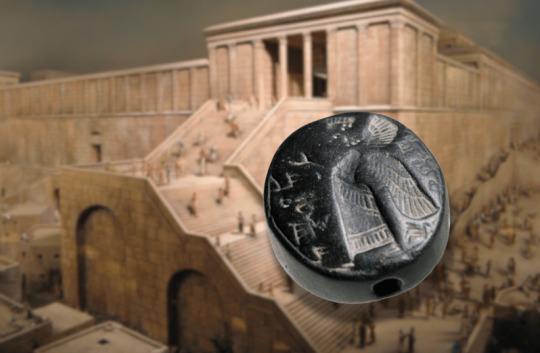
#‘Extremely Rare’ Ancient Stone Seal Discovered in Jerusalem#Southern Wall of the Temple Mount#Al-Aqsa#Jerusalem's Old City#winged 'genie'#amulet#seal#ancient artifacts#archeology#archeolgst#history#history news#ancient history#ancient culture#ancient civilizations#ancient israel#israeli history#ancient art#art history
47 notes
·
View notes
Text

Kabbalah - Tree of Life
Kabbalah (Hebrew קַבָּלָה “reception”, Standard Hebrew Qabbala, Tiberian Hebrew Qabbālāh; also written variously as Cabala, Cabalah, Cabbala, Cabbalah, Kabala, Kabalah, Kabbala, Qabala, Qabalah, Kaballah) is an interpretation (exegesis, hermeneutic) key, “soul” of the Torah (Hebrew Bible), or the religious mystical system of Judaism claiming an insight into divine nature.
Kabbalah became a reference to doctrines of esoteric knowledge concerning God, God’s creation of the universe and the laws of nature, and the path by which adult religious Jews can learn these secrets. Originally, however, the term Kabbalah was used in Talmudic texts, among the Geonim, and by early Rishonim as a reference to the full body of publicly available Jewish teaching. In this sense Kabbalah was used in referring to all of known Oral Law.
Kabbalah, according to the more recent use of the word, stresses the reasons and understanding of the commandments in the Torah, and the cause of events described in the Torah. Kabbalah includes the understanding of the spiritual spheres of creation, and the ways by which God administers the existence of the universe.
According to Jewish tradition dating from the 13th century, this knowledge has come down as a revelation to elect saints from a remote past, and preserved only by a privileged few. It is considered part of the Jewish Oral Law by the majority of religious Jews in modern times, although this was not agreed upon by many medieval Talmudic scholars, as well as a minority of current Orthodox rabbis.
Origin of Jewish Mysticism
According to adherents of Kabbalah, the origin of Kabbalah begins with the Tanakh (the Hebrew Bible). According to Midrash, God created the universe with “Ten utterances” or “Ten qualities.” When read by later generations of Kabbalists, the Torah’s description of the creation in the Book of Genesis reveals mysteries about the godhead itself, the true nature of Adam and Eve, the Garden of Eden, the Tree of Knowledge of Good and Evil and the Tree of Life, as well as the interaction of these supernal entities with the Serpent which leads to disaster when they eat the forbidden fruit, as recorded in Genesis 2.
The Bible provides ample additional material for mythic and mystical speculation. The prophet Ezekiel’s visions in particular attracted much speculation, as did Isaiah’s Temple vision (Chapter 6). Jacob’s vision of the ladder to heaven is another text providing an example of a mystical experience. Moses’ experience with the Burning bush and his encounters with God on Mount Sinai, are all evidence of mystical events in the Tanakh, and form the origin of Jewish mystical beliefs.
Jewish mystical traditions always appeal to an argument of authority based on antiquity. As a result, virtually all works claim or are ascribed ancient authorship. For example, Sefer Raziel HaMalach, an astro-magical text partly based on a magical manual of late antiquity, Sefer ha-Razim, was, according to the kabbalists, transmitted to Adam (after being evicted) by the angel Raziel. Another famous work, the Sefer Yetzirah, supposedly dates back to the patriarch Abraham. According to Apocalyptic literature, esoteric knowledge, such as magic, divination, and astrology, was transmitted to humans in the mythic past by the two angels, Aza and Azaz’el (in other places, Azaz’el and Uzaz’el) who ‘fell’ from heaven (see Genesis 6:4).
This appeal to antiquity has also shaped modern theories of influence in reconstructing the history of Jewish mysticism. The oldest versions of the Jewish mysticism have been theorized to extend from Assyrian theology and mysticism. Dr. Simo Parpola, a researcher at the University of Helsinki, has made some suggestive findings on the matter, particularly concerning an analysis of the Sefirot. Noting the general similarity between the Sefirot of the Kabbalah and the Tree of Life of Assyria, he reconstructed what an Assyrian antecendent to the Sepiroth would look like.[2] He matched the characteristics of En Sof on the nodes of the Sepiroth to the gods of Assyria, and was able to even find textual parallels between these Assyrian gods and the characteristics of god. The Assyrians assigned specific numbers to their gods, similar to how the Sepiroth assigns numbers to its nodes. However, the Assyrians use a sexagesimal number system, whereas the Sepiroth is decimal. With the Assyrian numbers, additional layers of meaning and mystical relevance appear in the Sepiroth. Normally, floating above the Assyrian Tree of Life was the god Assur, this corresponds to En Sof, which is also, via a series of transformations, derived from the Assyrian word Assur.
Furthermore, Dr. Paropla re-interpreted various Assyrian tablets in the terms of this primitive Sefirot, such as the Epic Of Gilgamesh, and in doing so was able to reveal that the scribes themselves had been writing philosophical-mystical tracts, rather than mere adventure stories. Traces of this Assyrian mode of thought and philosophy eventually makes reappearances in Greek Philosophy and the Kabbalah.
Skeptics would point out that the doctrine of the Sefirot only saw serious development starting in the 12th Century CE with the publication of the Bahir. To argue that the concept of the sefirot existed in an occult and undocumented form within Judaism from the time of the Assyrian empire (which fell from cultural hegemony in the 7th Cent. BCE) until it “surfaced” 17-18 centuries later strikes some scholars as far-fetched. A plausible alternative, based in the research of Gershom Scholem, the pre-eminent scholar of Kabbalah in the 20th Century, is to see the sefirot as a theosophical doctrine that emerges out of Jewish late antiquity word-mythology (as exemplified in Sefer Yetzirah) and the angelic-palace mysticism found in Hekalot literature being fused to the Neo-Platonic notion of creation through progressive divine emanations.
46 notes
·
View notes
Text
Amakusa is so funny to me. He’s 17. He’s been 17 for 60 years. He got really tan in a desert and it never went away. He’s legally related to kirei kotomine and this never becomes relevant. He’s from feudal japan. He’s catholic. He successfully started a rapture analogy. He keeps trying to do this again. He has a goth Assyrian elf girlfriend. He killed Dracula. It’s heavily implied he killed Zouken. He has beef with jeanne d’arc. he’s also the mentor of her child Santa alter self just because. He taught said child how to shoot energy beams like him. He takes child servants on field trips including such places as: Japanese hell. An alternate universe version of him is a satanist. He also has beef with a 3 week old homunculus. Almost every person who meets him agrees he’s the most shady person they’ve ever seen. He cosplays. He commits identity theft. He really does it all.
508 notes
·
View notes
Text



This manuscript was created for an Assyrian Christian of the 18th century, and is small enough to be carried by its owner at all times. It contains a collection of charms, or prayers for protection, to various saints. The illustration here depicts Mar Gewargis (St. George) and the dragon.
MS Syriac 156
Houghton Library, Harvard University
101 notes
·
View notes
Text
Gold Tablet from the Temple of Ištar in Aššur, Assyria (modern-day Iraq) c.1243-1207 BCE: this tablet was discovered within the foundations of the ancient temple; it measures just over 3cm (1in) in length
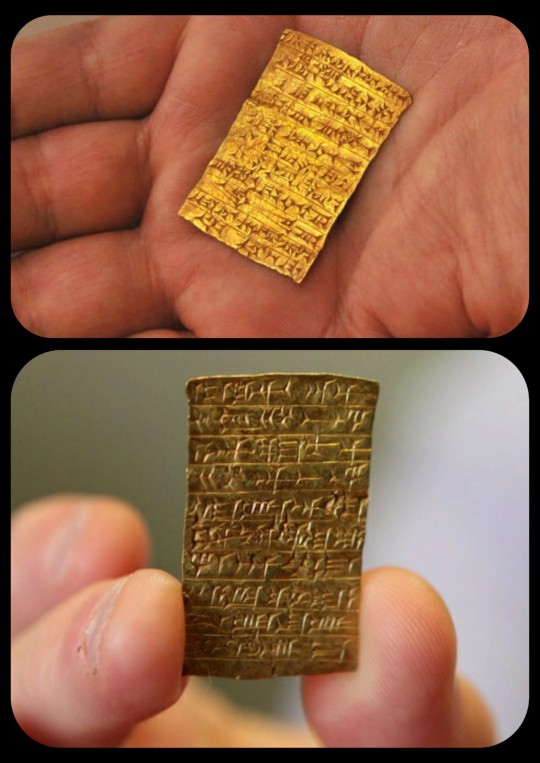
The cuneiform inscription honors King Tukulti-Ninurta I, who had ordered the construction of the temple, and describes how the building was constructed. This is just one of the many items that had been buried around the temple with similar inscriptions.
As this article explains:
Most of [the inscriptions installed in the temple] would not have been visible while the temple was still in use, as they were laid into the sanctuary’s foundations or walls. Tukulti-Ninurta commissioned a great number of objects carrying variations of the inscription commemorating his achievement of erecting the new temple.
The practice of depositing inscriptions directed at the gods as well as future generations had become a central element of the temple building process since the Early Dynastic Period, and was employed to immortalize the ruler by eternally associating his name with a monumental building such as the Ištar temple - a process that also transformed a sanctuary into a votive object dedicated to a deity.
It took several hours of searching (i.e. scouring through old artifact catalogs) for me to find a direct translation of the inscription on this particular tablet, and I could basically only find it in a PDF of an old bibliographic manuscript that isn't even in print anymore, but here it is:
Tukulti-Ninurta, king of the universe, king of Assyria, son of Shalmaneser, king of Assyria: at that time the temple of the goddess Ištar, my mistress, which Ilu-šumma, my forefather, the prince, had previously built — that temple had become dilapidated. I cleared away its debris down to the bottom of the foundation pit. I rebuilt from top to bottom and deposited my monumental inscription. May a later prince restore it and return my inscribed name to its place. Then Aššur will listen to his prayers.
This tablet was stolen from the Vorderasiatisches Museum in Berlin back in 1945, during the chaotic final days of WWII. It was then lost for almost 60 years before it finally re-emerged in 2006, when a Holocaust survivor named Riven Flamenbaum passed away and the tablet was found among his belongings. According to his family, Flamenbaum had gotten the tablet from a Soviet soldier (in exchange for two packs of cigarettes) at the end of the war.
In 2013, following a lengthy legal battle between Riven Flamenbaum's family and the Vorderasiatisches Museum in Germany, a court in New York ordered the family to return the tablet back to the museum.
Sources & More Info:
Albert Kirk Grayson: Assyrian Rulers of the Third and Second Millennia BC (to 1115 BC) (the translation appears on p.261)
Daniel Luckenbill: Ancient Records of Assyria and Babylonia, Volume 1 (PDF download; p.65 contains relevant info)
CTV News: 3,000-year-old Assyrian Gold Tablet Returned to German Museum
#archaeology#history#anthropology#ancient history#assyria#mesopotamia#golden tablet#cuneiform#artifact#ancient iraq#iraq#ancient near east#middle east#ishtar#pagan deities#polytheism#return the slab
348 notes
·
View notes
Text
📚Resources for The Ancient Near East📚
With a focus on religion
Getting Started On Research
JSTOR Guide LINK
Lumenlearning Guide LINK
Center for Online Education Guide LINK
Layman's Guide to Online Research by @/sisterofiris LINK
How to Vet Sources by me LINK
Websites for ANE Study
ETCSL | The Electronic Text Corpus of Sumerian Literature — http://etcsl.orinst.ox.ac.uk/catalogue.htm
ePSD | The Electronic Pennsylvania Sumerian Dictionary — http://psd.museum.upenn.edu/epsd-frame.html
ORACC | Open Richly Annotated Cuneiform Corpus — http://oracc.museum.upenn.edu/
ORACC's Mesopotamian Gods and Goddesses Project — http://oracc.iaas.upenn.edu/amgg/abouttheproject/index.html
ETANA | Electronic Tools & Ancient Near East Archive — http://etana.org/
CDLI | Cuneiform Digital Library Initiative — https://cdli.mpiwg-berlin.mpg.de/about
CAD | The Assyrian Dictionary of the Oriental Institute of the University of Chicago — http://www.aina.org/cad.html
Livius' Babylonian Section — https://www.livius.org/category/babylonia/
Multi Source Websites
Internet Archive Library — https://archive.org/details/texts | How To Use LINK
JSTOR — https://www.jstor.org/ | How To Use LINK
Google Scholar — https://scholar.google.com/intl/en/scholar/help.html
Google Books — https://books.google.com/googlebooks/about/index.html
Academia — https://support.academia.edu/hc/en-us/categories/360003163373-Academia-Free-Features
DOAJ Index of Open Access Journals — https://www.doaj.org/
Internet Ancient History Sourcebook — https://sourcebooks.fordham.edu/ancient/asbook.asp
Met Museum Publications — https://www.metmuseum.org/met-publications
Holy Books — https://www.holybooks.com/about/
Internet Sacred Text Archive — https://sacred-texts.com/
Deepdyve is a website of academic journal articles that isn't free but it isn't outrageously expensive for what it offers if you are heavily invested in new research — https://www.deepdyve.com/
Please leave a comment if a link breaks I'll do my best to find a new one
I'm planning to probably break these down into their own post due to link limit!
Books
*When using older books be aware that there may be inaccuracies and out of date information. If at all possible cross-reference and synthesize with newer materials. I have added years for this reason.
Books Specifically on Religion
Introduction to Ancient Mesopotamian Religion by Tammi Schneider (2011) Google Books | Good overview, 130ish page easy read.
Gods Demons and Symbols of Ancient Mesopotamia by Jeremy Black and Anthony Greene (1992) Internet Archive
Ancient Near Eastern Mythology by Gwendolyn Leick (1991) Internet Archive | This & Black's dictionary are good starting off points but I always use additional source's because some of Leick's info tends to be more out of date than other authors.
The Ancient Gods by E O James (1960) Internet Archive
The Cultic Calendars of the Ancient Near East by Mark Cohen (1993) PDF
Preforming Death Social Analysis of Funerary Traditions in the Ancient Near East and Medditarian edited by Nicola Laneri (2007) PDF
Mesopotamian Ritual-prayers of “Hand-lifting”(Akkadian Šuillas) by Christopher G Frechette Internet Archive
When Gods Were Men: The Embodied God in Biblical and Near Eastern Literature by Esther Hamon Internet Archive
Stories From Ancient Canaan by Michael D. Coogan and Mark S. Smith (1901) 1st Edition Internet Archive | 2nd Edition Google Books
A Handbook to Gods and Goddesses of the Ancient Near East (2021) Google Books
The City of the Moon God by Tamara Green (1992) Google Books
The Myth of Sacred Prostitution in Antiquity by Stephanie Lynn Budin (2008) Google Books
Books on ANE History in General
Handbook to Life in Ancient Mesopotamia by Stephen Bertman (2005) Google Books | Highly recommended, easy read
Ancient Mesopotamia Portrait of Dead Civilization by A. Leo Oppenheim (1964) Internet Archive
A History of the Ancient Near East ca. 3000- 323BC by Marc Van de Mieroop (2016) Internet Archive
Everyday Life in Ancient Mesopotamia by Jean Bottero (1992) Internet Archive
Women in the Ancient Near East by Marten Stol (2016) Open Access
Chapter 3 Elamite from The Cambridge Encyclopedia of Ancient World Languages edited by Roger Wooard (2004) PDF
Sumerian Art by Andre Parrot (1970) Digital Library
Dictionaries of Civilization Mesopotamia: Assyrians, Sumerians, Babylonians by Enrico Ascalone and Simona Schultz (2007) Publisher Website Entry
The Greek Magical Papyri in Translation, Including the Demotic Spells edited by Hans Dieter Betz PDF (If that link breaks Google Books)
Babylon: Mesopotamia and The Birth of Civilization by Paul Kriwaczek (2012) Google Books
Daily Life in Ancient Mesopotamia by Karen Rhea Nemet-Nejat (2002) Google Books
Mesopotamia to Iraq A Concise History by Hans Nissen (2009) Google Books
In the Land of A Thousand Gods: A History of Asia Minor in the Ancient World by Christian Marek (2016) Google Books
Mesopotamia: The Invention of the City by Gwendolyn Leick (2002) Google Books
Palmyra by Paul Veyne (2017) Google Books
The Ancient Near East c. 3000-330 BC Volume 1 by Amélie Kuhrt (1995) Google Books
The Ancient Near East c. 3000-330 BC Volume 2 by Amélie Kuhrt (1995) Google Books
The Image of the Netherworld in the Sumerian Sources by Diana Katz (2003) Google Books
Journal Articles
Mesopotamian Pandemonium by Frans Wiggermann LINK
Nergal A by Frans Wiggerman LINK
The Four Winds and the Origins of Pazuzu by Frans Wiggermann LINK
Sumerian Texts Involving The Netherworld and Funerary Offerings by Jeremiah Peterson LINK
The Sexual Union of Enlil and Ninlil: an uadi Composition of Ninlil by Jeremiah Peterson LINK
New Year Ceremonies in Ancient Babylon: 'Taking Bel by the Hand' and a Cultic Picnic Religion Jeremy A Black LINK
Phenomenon of God-nap in Ancient Mesopotamia A Short Introduction Erika D. Johnson LINK
Preforming Death Social Analysis of Funerary Traditions in the Ancient Near East and Medditarian edited by Nicola Laneri LINK
Tablet of Destinies and the Transmission of Power in Enūma eliš by Karen Sonik LINK
Theology and Worship in Elam and Achaemenid Iran by Koch LINK
Evil against evil. The Demon Pazuzu by Nils P Heeßel LINK
New Readings in the Amarna Versions of Adapa and Nergal and Ereshkigal by Shlomo Izre'el LINK
The Origin of the Mystical Number Seven in Mesopotamian Culture: Division by Seven in the Sexagesimal Number System by Kazuo Muroi LINK
Athirat: As Found at Ras Shamra Justin Watkins LINK
Two Remarkable Vocabularies: Amorite-Akkadian Bilinguals! by Andrew George, Manfred Krebernik. Unfortunately now I can only find a paywalled version.
From Beyond Ereškigal? Mesopotamian Magic Tradition in the Papyri Graecae Magicae by Daniel Schwemer LINK
The Phoenician Presence in the Aegean during the Early Iron Age : Trade, Settlement and Cultural Interaction by Edizioni Quasar LINK
Invoking the God: Interpreting Invocations in Mesopotamian Prayers and Biblical Laments of the Individual by Alan Lenzi LINK
The Two Steles of Sargon: Iconology and Visual Propaganda at the Beginning of Royal Akkadian Relief by Lorenzo Nigro LINK
Asherah, the West Semitic Goddess of Spinning and Weaving? Susan Ackerman LINK
Ancient Ethics by Gerald Larue LINK
Early Bronze Age Graves at Gre Virike (Period II B): An Extraordinary Cemetery on the Middle Euphrates by A. Tuba Ökse LINK
The Evil Eye in Mesopotamia by Marie-Louise Thomsen LINK
Web Articles
Living Deities: Ancient Mesopotamian Patron Gods & Their Statues by Iilias Luursema on The Collector LINK
Armana Letters by Elizabeth Knott on Met Museum. LINK
Translations
*ETCSL is all translations of Sumerian literature!
Ishtar's Decent Translation & Recited in Akkadian LINK
The Harps That Once by Thorkild Jacobsen Google Books
The Project Gutenberg Sumerian Liturgies and Psalms by Stephen Langdon PDF
Project Gutenberg's Sumerian Hymns, by Frederick Augustus Vanderburgh LINK
Ancient Near East Anthology of Texts and Pictures edited by Pritchard 1st Edition Internet Archive
A Hymn to Tammuz (Cuneiform Texts from the British Museum, Tablet 15821, Plate 18) J. Dyneley Prince (1909) JSTOR
Ludlul Bel Nemegi by Alan Lenzi the Akkadian "Poem of the Righteous Sufferer" LINK
The Flood Myths LINK
Enūma Eliš Translations: L W King Translation 1902 LINK | ETANA Translation LINK | Composite Translation LINK
Code of Ur-Nammu LINK
Code of Liptin Ishtar LINK
The Legend of Sargon of Akkadê, c. 2300 BCE LINK
Other
Google Drive shared on Tumblr LINK
Dissertation: Personal Religion in Ancient Mesopotamia as shown in Akkadian Texts by Maurice Noil Leon Couve De Murville, University of London PDF
#sumerian#assyrian#akkadian#ancient near east#ane#assyria#akkad#mesopotamia#mesopotamian#resources#sources#books#michibooks#middle east#religion#history#ancient history#journal articles#research#polytheism#paganism#landof2rivers#sourcing#i will not add written by pagans for pagams#because they are all awful and willfully ignorant at best#and anything written by a jungian analyst can fuck off#large resource
30 notes
·
View notes
Text
Just leaving this here.
Feel free to reblog.
Also this.
#dougie rambles#news#political crap#armenia#artsakh#turkey#france#HDP#fuck Erdogan#fuck Azerbaijan#armenian genocide#columbia university#solidarity#sayfo#assyria#bethnahrin#assyrians#Assyrian genocide#anti denialism#leftism#anti fascism#anti imperialism#anti revisionism#feel free to reblog
4 notes
·
View notes
Text
by John Jeffay
Researchers in Israel are re-writing the history of Jerusalem after advances in carbon dating have allowed them to create a timeline of its construction with greater accuracy than ever before.
They now believe that much of the ancient city’s expansion actually took place at least a century earlier than previously thought, and have been able to link archaeological findings from the City of David archeological site to events described in the Bible.
The research program, funded by the Israel Science Foundation, lasted almost a decade and was jointly carried out by the Israel Antiquities Authority, Tel Aviv University (TAU) and the Weizmann Institute of Science. Their findings were recently published in the science journal PNAS.
The research team employed new radiocarbon dating techniques that can pinpoint, within a decade, the age of organic finds such as grape seeds, date pits and even bat skeletons.
Ancient tree rings from Europe, stored at the Weizmann Institute of Science, served as a benchmark for their timeline, providing data on fluctuations of carbon-14 – the basis of the radiocarbon dating method – found in the atmosphere.
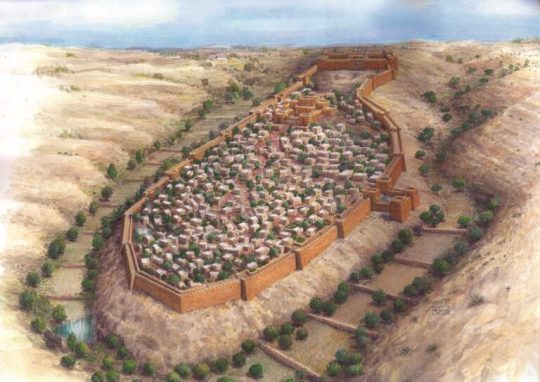
Their discovery challenges the idea that Jerusalem was constructed during the 350 years when the kings of Judah reigned.
“Until now, most researchers have linked Jerusalem’s growth to the west, to the period of King Hezekiah — just over 2700 years ago, following the Assyrian exile,” said Prof. Yuval Gadot of TAU.
22 notes
·
View notes
Text

'Save Iraqi Culture' - a surreal monument depicting a five-armed giant supporting a toppling cylinder seal; Baghdad, Iraq : In 2010, a bizarre sculpture was unveiled in the Mansour district of Baghdad, Iraq. Designed by renowned sculptor Mohammed Ghani Hikmat, it depicts a muscular giant supporting a Sumerian-style cylinder seal, which is broken at the base and toppling, using all his five arms. When deciphered, the cuneiform on the cylinder seal reads “writing began here” in reference to the Mesopotamian civilization’s role in the development of writing systems. Commissioned by the mayor of Baghdad, it was part of the city’s attempt to improve its long-tarnished image, to promote the richness of Iraqi culture and history. The area of what is modern Iraq was the birthplace one of the earliest human civilizations. A long series of literate cultures, cities, kingdoms and empires emerged in Fertile Crescent between Tigris and Euphrates rivers. When Alexander the Great entered the gates of Babylon at the head of his armies, he was an upstart, while Iraq was the home of what was already an ancient civilization. Sumerian civilization emerged in Iraq about 4000 BC. It evolved a rich and complex culture; built cities, temples and palaces; and developed sophisticated irrigation systems for large-scale agriculture. Sumerians also developed the earliest system of writing cuneiform in which they recorded their myths such as the famous “Epic of Gilgamesh.” Sumerians invented the wheel about 3700 BC and a system of mathematics. Sumerians were followed by the Babylonians and the Assyrians. King Hammurabi of Babylon promulgated a famous law-code, which was a landmark in the development of a system of social justice. Biblical Abraham, spiritual father of Judaism, Christianity and Islam, was originally from the city of Ur in Iraq. Assyrians further developed geometry and medical science. Alexander‘s conquest led the building of Greek cities and the spread of Hellenistic culture. Finally, Iraq was absorbed into the Persian Empire until the rise of the Muslim empires in 7th Century AD. Baghdad became the capital of the Abbasid Empire in 8th Century. This cosmopolitan commercial city was a famous center of culture and learning. It was regarded as the intellectual center of the world, standing at the crossroads of the trade routes between Europe, Byzantium, Middle East, India and China. Arab, Greek and Persian cultures mingled, and philosophy, science, medicine, literature and the arts flourished in universities and the court. Arabic became the primary language and most of the people gradually converted to Islam. Christians and Jews lived with Muslims in relative harmony as worshipers of the one God. The Empire reached from the borders of China to the Mediterranean and northern Africa. Catastrophe struck with Mongol invasions of Genghis Khan and his successors in 13th Century. Baghdad was conquered and the countryside devastated. The entire region went into decline. Irrigation systems collapsed and agriculture declined to be replaced by swamps and marshes. European discovery of a route around Africa to India led the decline of trade and commerce through Iraq. Urban society declined and the people turned to tribally-based pastoral nomadism. It was a “dark age.” In 17th Century, Iraq became a province of the Turkish Ottoman Empire until British took over after WWI. Britain set up a monarchy which became independent in 1932.
16 notes
·
View notes
Text

Relief of a winged bull (lamassu)
Lamassus are were believed to be guardians against evil and protectors of kings.
This sculpture guarded the entrance to the throne rom of the Assyrian king Sargon II (r. 721-705 BCE) at Khorsabad (modern Iraq). It was excavated by the Oriental Insitute at the University of Chicago in 1929 and was gifted to the University by the Department of Antiquities of Iraq. The relief was broken into more than a dozen pieces and was restored in Chicago.
Some of the Akkadian inscriptions on the lamassu read, "I planned day and night how to settle that city and how to raise its great shrines, the dwellings of the great gods, and my royal residential palaces. I spoke and commanded it to be built…" and "…I built palaces of ivory, ebony, boxwood, musukkannu‐wood, cedar, cypress, juniper, burashu‐juniper, and pistachio‐wood for my royal dwelling. At their gates I constructed a portico patterned after a Syrian palace and roofed it with cedar and cypress beams. At their entrances, I erected animals made of white stone resembling beasts of the mountain and sea."
gypsum; H. 4.95m; W. 4.91m; D. 1.0m; weighs approximately 40 tons
Open image for higher quality.
On permanent display in the Mesopotamian Gallery at the Institute for the Study of Ancient Cultures (ISAC) at the University of Chicago (formerly the Oriental Institute), accession no. 872
#archaeology#art#mesopotamia#assyria#middle eastern archaeology#iraq#university of chicago#isaac.txt#near eastern studies#near eastern archaeology
11 notes
·
View notes